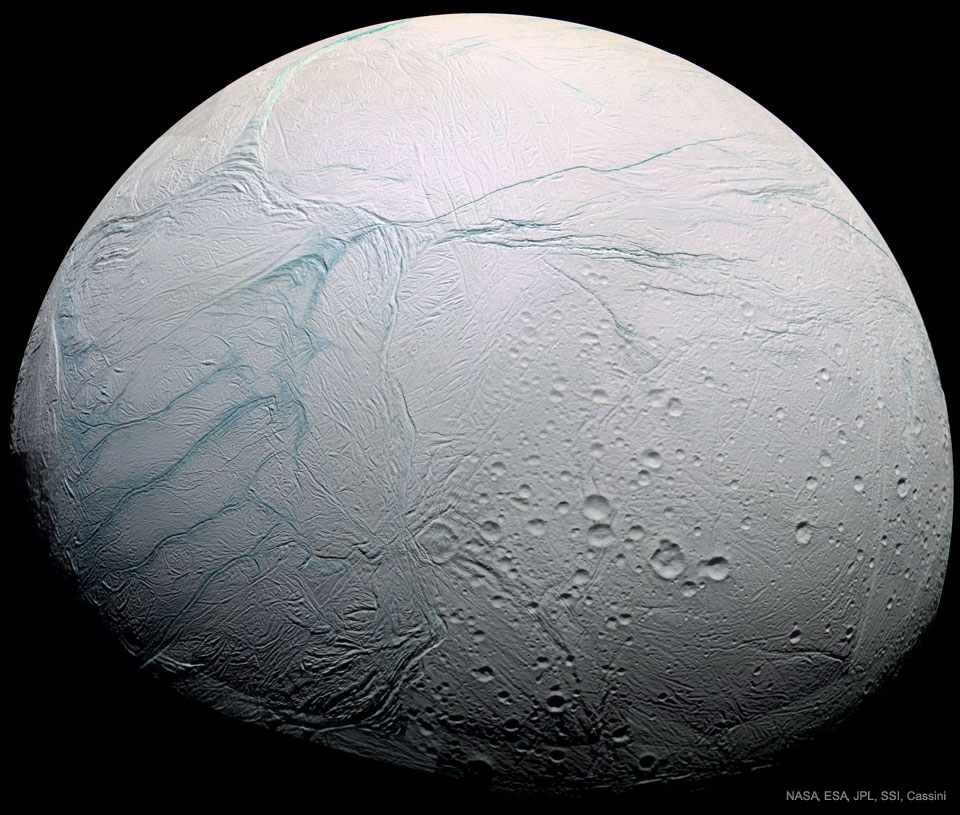
2018年6月30日 星期六
Fresh Tiger Stripes on Saturns Enceladus

Sirangelo Is Stepping Down at Sierra Nevada
Sierra Nevada Corporation Memo: Mark Sirangelo: My Transition At SNC
"I wanted to let you know of decision that I have made. After reflecting on my commercial space journey over the past 17 years and after significant consideration I have concluded that it is time for me to make a change and end my executive role leading Sierra Nevada Corporation's Space Systems. This decision is being made from a positive personal place and as a friendly transition from SNC with the knowledge that the SNC space business is stable and strong."
from NASA Watch https://ift.tt/2NbAPbu
via IFTTT
2018年6月29日 星期五
The East 96th Street Moon

Boeing's Creepy Petition Wants To Track Your Online Activity
Keith's note: A month ago I mentioned the Facebook advertsing that Boeing has been doing (see "Boeing's Imaginary Space Program"). Well, they are at it again. I just saw this advertisement show up on Facebook (larger image). It leads with "NASA hasn't used American-made spacecraft to send astronauts to space since 2011. Sign the petition to show you support AMERICAN-MADE SPACECRAFT." What's their point? The only competitor Boeing has right now for NASA business is another 100% American-made spacecraft by SpaceX. And I suppose you can add in Sierra Nevada and Blue Origin too if you want. So no matter who flies on a commercial vehicle they will be flying on an American spacecraft. So why is Boeing trying to get you to support something that happens no matter what?
If you click on the link it sends you to this link (note the tracking code in the URL) - you are now an "enthusiast" for their "sls-space-race-petition". https://watchusfly.com/campaigns/space-american-made-petition-acquisition/?utm_source=facebook&utm_medium=video-post&utm_campaign=acquisition_petition_sls-space-race-petition-2-b&utm_term=space&utm_content=enthusiast which asks you to "Add your name to support American-made spacecraft." By giving your name, email, and zip code. Of course they also put cookies in your browser and know your IP number. Oh yes - take a look at their policy page and look at all the things you will let them do with this information (as if anyone reads this stuff):
"Your use of social media features will result in the collection or sharing of information about you, depending on the feature. The basic details we receive depends on your social network account privacy settings. We encourage you to review the privacy practices and settings of the social media sites you use to make sure you understand the personal information that may be collected, used, and shared by those sites."
At the bottom in lighter grey text is the note: "Site intended for use by U.S. residents 14 years of age or older. Boeing may use the information you provide to send you future communications about Boeing and issues that may be of interest to you. For further information, please review Boeing's Privacy Policy." If you follow the Take action link you end up at a page asking you to "Support Boeing T-X Today". OK, so why is Boeing sending you to a page that is supposed to be about space that is actually a thin disguise for a Congressional lobbying effort that is really focused on military hardware? And what is Boeing going to do with the information you have given them? Well, they tell you that too:
"When you use Boeing Services, we collect and process information about your pinpointed location, after obtaining consent as required by local law. We use various technologies to determine location, including IP address, GPS, and other sensors that, for example, provide us with information on nearby devices, Wi-Fi access points, and cell towers. Location data is used in accordance with Collection and use of personal information, and disclosed in accordance with Disclosure of your information. ... Boeing uses, and permits service providers to use, tracking scripts or "tracers" and web beacons that recognize a unique identifier from a cookie placed on your device by another website. For example, we use a tracer to determine whether you visit our employment pages after visiting a resume or career site where we placed a banner ad. We also use these technologies to compile information about your website usage and your interaction with email or other communications, to measure performance, and to provide content and ads that are more relevant to you. A web beacon is typically a transparent graphic image that can be embedded in online content, videos, and emails, and can allow a server to read certain types of information from your device, know when you have viewed the beacon, and the IP address of your device. For example, we include web beacons in our promotional email messages or newsletters to determine whether our messages have been opened or interacted with and whether our mailing tools are working properly."
Keep reading. You are, in essence. giving them permission to use your info for whatever they want to do and they will never tell you just what that is. They talk about your credit card information, buying preferences, and all manner of things that they can track if they want. Just a reminder - they can track nearly everything you visit. EVERYTHING. What on Earth is Boeing up to? Why do they need to start tracking you and your cellphone to get your location? And why are they openly allowing people people as young as 14 to consent to being tracked? This is outright creepy.
from NASA Watch https://ift.tt/2lLtDXk
via IFTTT
Why Does Sierra Nevada Want To Land Dream Chaser in Alabama?
Space plane could make first Alabama landing in 2022, AL.com
"A mini space plane could return from space and land at the Huntsville International Aiport as soon as 2022, the Alabama Space Authority was told today. "When the space shuttle landed, thousands of people would come out. It was a huge event," John Roth, vice president of business relations for Sierra Nevada Corp., said in Huntsville. "We haven't had a landing like that in a long time. We think that first landing is going to be a giant landing, and we'd like it to be here."
Keith's note: Is Sierra Nevada pandering to the Alabama congressional delegation or is there an actual, logical, reason to land in Alabama? Oh yes - Sierra Nevada says that their first mission might be "sponsored by the United Nations". But who is actually paying for it? The UN?
from NASA Watch https://ift.tt/2tDNBrm
via IFTTT
Yet Another Stealthy Space Meeting In Washington, DC
Keith's note: There has been a meeting (actually an "unconference") called "Decolonize Mars" at the Library of Congress in Washington, DC this attended by people who do not want to colonize Mars.
According to the unconference website "The term decolonization refers to undoing the legacy of colonialism. Many people are used to hearing about "colonizing Mars" to talk about humanity living in space; here, we examine how using a colonialist framework in space reproduces past harm from humanity's history on Earth. This event is about envisioning fresh pathways for thinking about space exploration by stepping away from the ways we usually talk about space, which by definition is "decolonizing" the topic. Hence, "Decolonizing Mars"."
In other words they only seem to want like-minded attendees. Not that I don't agree with part of what I think they are getting at since we have certainly screwed up this planet - but there's a clear bias on one side of the argument in the mission statement. They are tweeting with the hashtag #decolonizemars but the invitation-only attendee list is password-protected. No media seem to have been allowed. No webcast. Nothing. This is rather odd for a meeting in a government facility convened by government employees.
This meeting was organized by the current Baruch S. Blumberg/NASA Chair of Astrobiology at the Kluge Center of the Library of Congress. I knew Barry Blumberg rather well. Barry wanted to tell everyone about everything. I am not certain he'd like this closed door approach. This is just more DC choir practice in an echo chamber by a subset of the usual suspects. The remaining 99.9% of the people who pay for this party get left out. Just sayin'
from NASA Watch https://ift.tt/2yVCqzj
via IFTTT
SpaceX's Falcon 9 Rocket Launches Dragon to the International Space Station

NASA Awards Contract for Continued Operations of its Jet Propulsion Laboratory
June 29, 2018
from NASA https://ift.tt/2IDGZxT
via IFTTT
Young Kansans to Call Space Station from Eisenhower Presidential Library
June 29, 2018
from NASA https://ift.tt/2MByupt
via IFTTT
Northrop Grumman Is Hiring People To Do Those Difficult Spacecraft Things
Based on the James Webb Space Telescope IRB report released by @NASA yesterday @NorthropGrumman needs to hire people who can: use a wrench to tighten bolts, read simple solvent use instructions, and conduct basic electrical tests. #JWST #NASA https://t.co/WLkM6FtsLd
— NASA Watch (@NASAWatch) June 29, 2018
from NASA Watch https://ift.tt/2MwsE8G
via IFTTT
Another SpaceX Cargo Run To The ISS Underway
SpaceX Launches CRS-15 to the International Space Station, NASA
"Experiments investigating cellular biology, Earth science and artificial intelligence are among the research heading to the International Space Station following Friday's launch of a NASA-contracted SpaceX Dragon spacecraft at 5:42 a.m. EDT. Dragon lifted off on a Falcon 9 rocket from Space Launch Complex 40 at Cape Canaveral Air Force Station in Florida with more than 5,900 pounds of research, equipment, cargo and supplies that will support dozens of investigations aboard the space station."
from NASA Watch https://ift.tt/2tTSBYe
via IFTTT
ISS Daily Summary Report – 6/28/2018
June 29, 2018 at 12:00AM
from NASA https://ift.tt/2KhbZt4
via IFTTT
New NASA Research, Hardware Heading to Space Station on 15th SpaceX Resupply Mission
June 29, 2018
from NASA https://ift.tt/2Kkgwe6
via IFTTT
Dragon Resupply Mission (CRS-15)
On Friday June 29, Falcon 9 successfully lifted for launch of its fifteenth Commercial Resupply Services mission (CRS-15) at 5:42:42 a.m. EDT, or 9:42:42 UTC, from Space Launch Complex 40 (SLC-40) at Cape Canaveral Air Force Station, Florida. Dragon separated from Falcon 9’s second stage about nine minutes and thirty seconds after liftoff and is on its way to the International Space Station, currently expected to arrive early on the morning of July 2nd.
Both Falcon 9 and the Dragon spacecraft for the CRS-15 mission are flight-proven. Dragon will return to Earth with more than 4,000 pounds of cargo after a one-month stay at the ISS. You can watch a replay of the launch below and find out more about the mission in our press kit.
from SpaceX News https://ift.tt/2KyTXBK
via IFTTT
2018年6月28日 星期四
Messier 24: Sagittarius Star Cloud

Two Ways Of Looking At Webb Space Telescope Delays
|
|
from NASA Watch https://ift.tt/2KrwOhl
via IFTTT
Why Is NASA Is Stuck Paying For Northrop Grumman Errors?
According to #JWST IRB chair Tom Young simple fixes that weren't implemented by @NorthropGrumman ended up costing #NASA $600 million. Delays now cost $1 million/day. One would hope that @NASA is examining ways to get Northrop Grumman to refund the cost of fixing their mistakes. pic.twitter.com/pRWrDdOVrJ
— NASA Watch (@NASAWatch) June 28, 2018
Heads up @NorthropGrumman There is a precedent for @NASA to follow for seeking reimbursement for contractor errors in the construction of #NASA Space telescopes: "Hubble Space Telescope Makers Pay for Costly Mirror Mistake" Nov 1993, Physics Today https://t.co/kmVpSA0kV2 pic.twitter.com/YHRLspqBFJ
— NASA Watch (@NASAWatch) June 28, 2018
from NASA Watch https://ift.tt/2N7MOqM
via IFTTT
Bridenstine Talks About Space Force When No One Else Will
Keith's note: I tuned into the Politico Space thing last night. I missed a lot of it since it was supposed to start at 6:15 but after 30 minutes of waiting for it to start I gave up and did something else. I checked back in later and listened for 15 minutes or so. I just happened to tune in just as Jim Bridenstine was asked about the whole Space Force thing. Being an actual warfighter who defended our country, a former Congressman who grappled with legislation, and a guy who thinks about space a lot, he knows his stuff.
Bridenstine answered the Space Force question cogently for 10 minutes or more, jumping back to the topic again and again later. Bridenstine clearly supports the idea of a Space Force and makes his viewpoint clearly without notes or stumbling. Indeed, now and then, he almost sounded like he was auditioning to be Space Force Commander.
What's odd about this is that no one at the Department of Defense really wants to talk about Space Force - just Bridenstine. Indeed, the impression one gets is that they are not too thrilled about turning the Pentagon into a Hexagon with a sixth service called Space Force (yes I stole that joke). You can't get the National Space Council to talk about this either. In Washington parlance Bridenstine probably got a little over his skis or was outside his swim lane a bit.
I do not think this signals any sort of military role for NASA. But this space agency does not operate in a vacuum (pun intended) when it comes to other space activities. If Bridenstine is the only one who is willing to talk about space in a larger context that includes things outside of NASA's purview such as Space Force - when no one else will - perhaps we should listen. Maybe he knows what is actually going on.
from NASA Watch https://ift.tt/2tA1iHC
via IFTTT
ISS Daily Summary Report – 6/27/2018
June 27, 2018 at 09:47PM
from NASA https://ift.tt/2yN1nNm
via IFTTT
Sigma Octantis and Friends
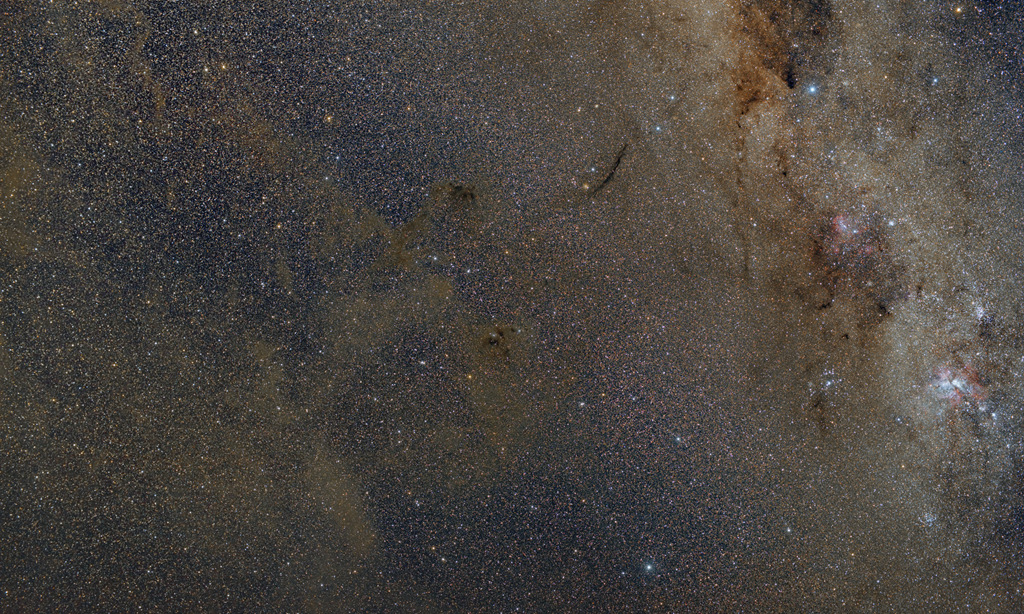
2018年6月27日 星期三
Where Oh Where Did All Of That Webb Money Go?

|
|
|
|
from NASA Watch https://ift.tt/2KdibSO
via IFTTT
JWST External Independent Review Board Report Briefing
Media Telecon on Status of James Webb Space Telescope, June 27th
"NASA will host a media teleconference at 1 p.m. EDT [17:00 UTC], Wednesday, June 27, to provide an update on the agency's James Webb Space Telescope and the findings of an external independent review board. Webb will be the world's premier infrared space observatory and the largest astronomical space science telescope ever built. Audio of the call will stream live on NASA's website [https://www.nasa.gov/live]."
from NASA Watch https://ift.tt/2lB7IBO
via IFTTT
Is The Force With The Space Force?
Now is the time for the Space Force. Trump just needs to get it right, op ed, Washington Post
"The Pentagon helped shoot down the "corps" idea a year ago. Defense Secretary Jim Mattis wrote congressional leaders last October: "I oppose the creation of a new military service and additional organizational layers at a time when we are focused on reducing overhead and integrating joint warfighting functions." But Trump continued to push his pet space project. One advocate was Vice President Pence, chairman of the National Space Council and a rocket enthusiast who's said to have brought his family to Florida to watch NASA launches. Another was Newt Gingrich, the peripatetic former House speaker who, like Trump, enjoys promoting flashy, controversial ideas. "If Trump can break through the bureaucracy, all this will happen within a decade," even by 2020, Gingrich predicted in a phone interview Tuesday. Gingrich, who informally attends Space Council meetings, says he has talked with Trump about the idea but that the passion for it is the president's. The Air Force had been hoping this proposal would go away."
The New Arms Race Threatening to Explode In Space, Wired
Since he took office, President Trump has dropped numerous hints of the warnings he's evidently getting from military and intelligence leaders. During a spring livestream with astronauts aboard the International Space Station, he alluded, obliquely and without context, to the "tremendous military applications in space." And he has repeatedly floated the idea of creating a new branch of the armed forces specifically for celestial combat--culminating last week with a speech out-and-out ordering the Joint Chiefs of Staff to begin developing plans for a new "Space Force."
from NASA Watch https://ift.tt/2MpTYoW
via IFTTT
ISS Daily Summary Report – 6/26/2018
June 27, 2018 at 12:00AM
from NASA https://ift.tt/2ItQeAw
via IFTTT
Highlights of the Summer Sky
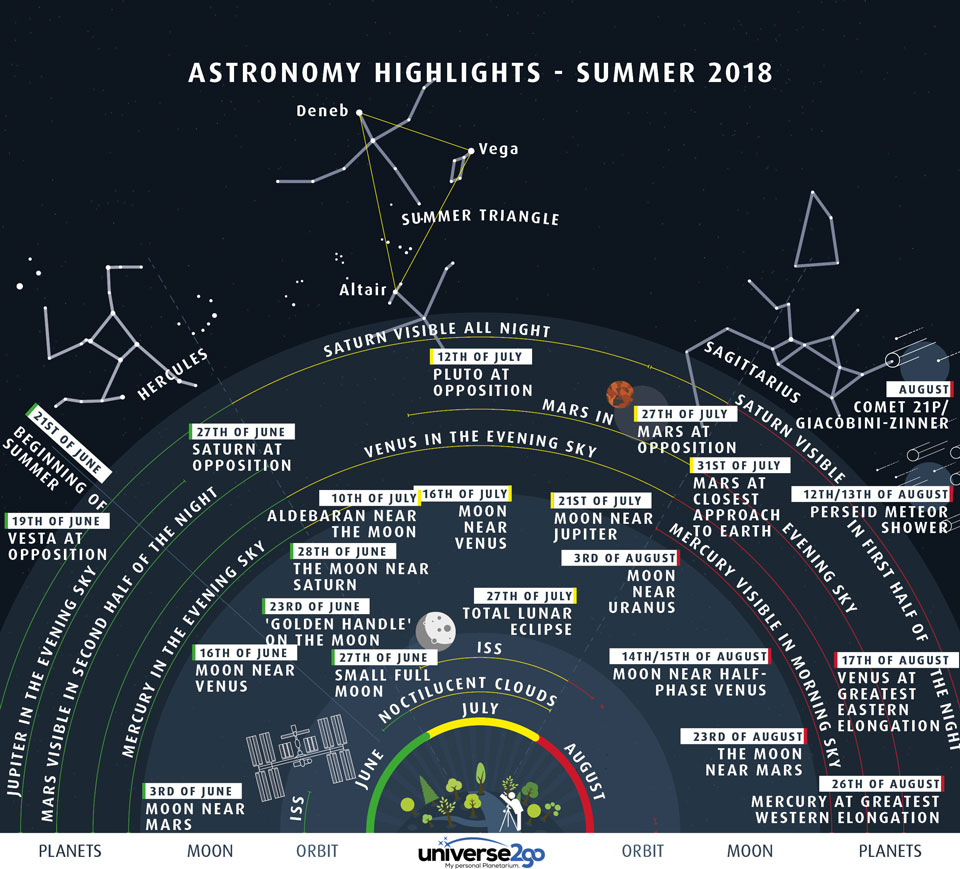
2018年6月26日 星期二
ISS Daily Summary Report – 6/25/2018
June 26, 2018 at 12:00AM
from NASA https://ift.tt/2twUWca
via IFTTT
Aldrin Family Responds To Wall Street Journal
Letter from the Aldrin family attorney to @WSJ Wall Street Journal regarding inaccuracies in their article on the lawsuit by @TheRealBuzz Buzz Aldrin and other issues pic.twitter.com/MpgbAK0oG2
— NASA Watch (@NASAWatch) June 26, 2018
from NASA Watch https://ift.tt/2KeVpdu
via IFTTT
2018年6月25日 星期一
Statement from Christina Korp Regarding Wall Street Journal Article on Buzz Aldrin
"After the article in the Wall Street Journal yesterday, I must respond. I have tried to stay out of the fray so as not to create any mixed signals while the Aldrin family and I try to protect and maintain Buzz Aldrin's reputation, legacy and ability to sustain himself in the future in this difficult situation. However, I cannot stand by while there are unwarranted personal attacks on my integrity, honesty, professionalism and character. I am being unfairly defamed by the managers of the newly formed Buzz Aldrin Ventures and its legal counsel. I encourage those that know me to research the background of these individuals. I also encourage media to be careful what they write and make sure the facts are correct. There are too many inaccuracies in the public arena at the moment to respond on an individual basis. Please know that I am devastated by these lies and shocked that reputable publications like the Journal would run a story like the one just published without fairly seeking both sides of the story. With legal action now pending, I hope you understand my need to be cautious. This same level of caution is not being followed by the people currently surrounding Buzz who are sharing misinformation and unfounded accusations about me and the Aldrin family. I intend to continue to take the professional route.
Unfortunately, almost a year ago, some people began to exert undue influence on Buzz. These individuals began to actively try to drive a wedge between Buzz and his children, and me, for what I fear is their own benefit. As many people have noted, there is a different tone with Buzz's Twitter account due to these individuals taking over control of that account. New companies were very recently started by this new team, under the guise of benefitting Buzz.
from NASA Watch https://ift.tt/2MWwDwc
via IFTTT
NASA Technologies Significantly Reduce Aircraft Noise
June 25, 2018
from NASA https://ift.tt/2tD7hum
via IFTTT
David Bowles Needs To Explain Pay Cuts To NASA Langley Employees
NASA Langley contract employees get pay cuts under new contractor, Daily Press
"In March, NASA Langley announced it had chosen its newest contractor, Alutiiq-Fusion Joint Venture, to provide about 200 employees under Langley's administrative, media and professional services (LAMPS II) contract. Soon after, Stefula was stunned to discover she would have to take a 37 percent pay cut to keep her job. She wasn't alone. Several contract workers at the center interviewed by the Daily Press say their salary reductions range from 8 percent to 37 percent, and that countless colleagues have taken similar cuts, or greater. They cite unsubstantiated accounts of a few senior staffers who had their pay slashed by 70 percent."
"Langley's new contractor is a partnership between Alutiiq LLC, a Native American-owned business based in Anchorage, Alaska, and Media Fusion of Huntsville, Ala. The companies divvied up employees, with Alutiiq largely handling the administrative and professional staffing and Media Fusion the media services, video production and public affairs. Alutiiq-Fusion also took on a subcontractor, Banner Staffing in Washington, D.C., to handle about a dozen workers for Langley's Office of Human Capital Management."
Keith's note: The most pathetic aspect of this is a refusal to answer questions from the reporter from the Daily Press. Instead the companies involved and NASA Langley PAO simply sent a statement. And no one has heard from Langley Center Director David Bowles. As such, employees have to do their own investigative reporting to find out why they are getting pay cuts. How pathetic and uncaring. People working their asses off for Langley get unexpected and wholly unwarranted pay cuts and their management doesn't have the spine to face them or the media to explain things?
Let's hope Sen. Kaine and Sen. Warner take further action since David Bowles and his management team clearly are not going to. Cutting employee salaries with no notice or reason is not the way to go back to the Moon.
from NASA Watch https://ift.tt/2Kn7M2M
via IFTTT
Hayabusa2 Approaches Asteroid Ryugu
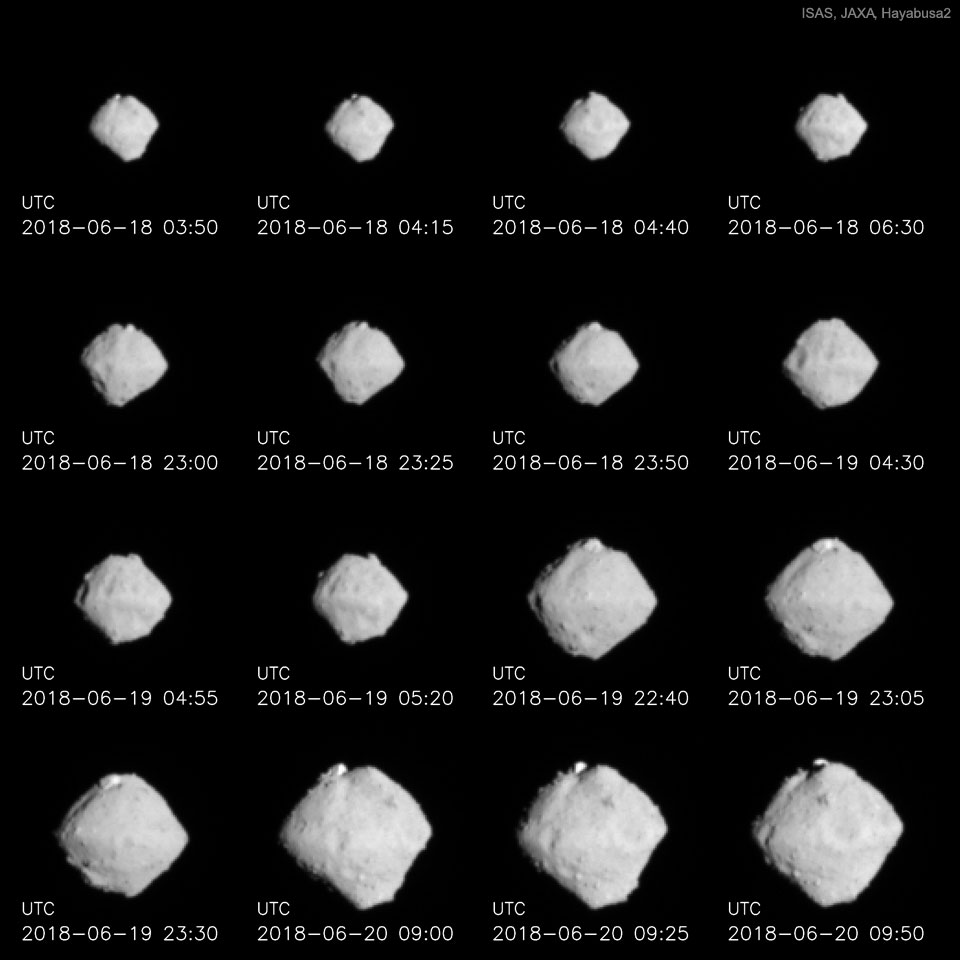
2018年6月24日 星期日
Rocket Plume Shadow Points to the Moon
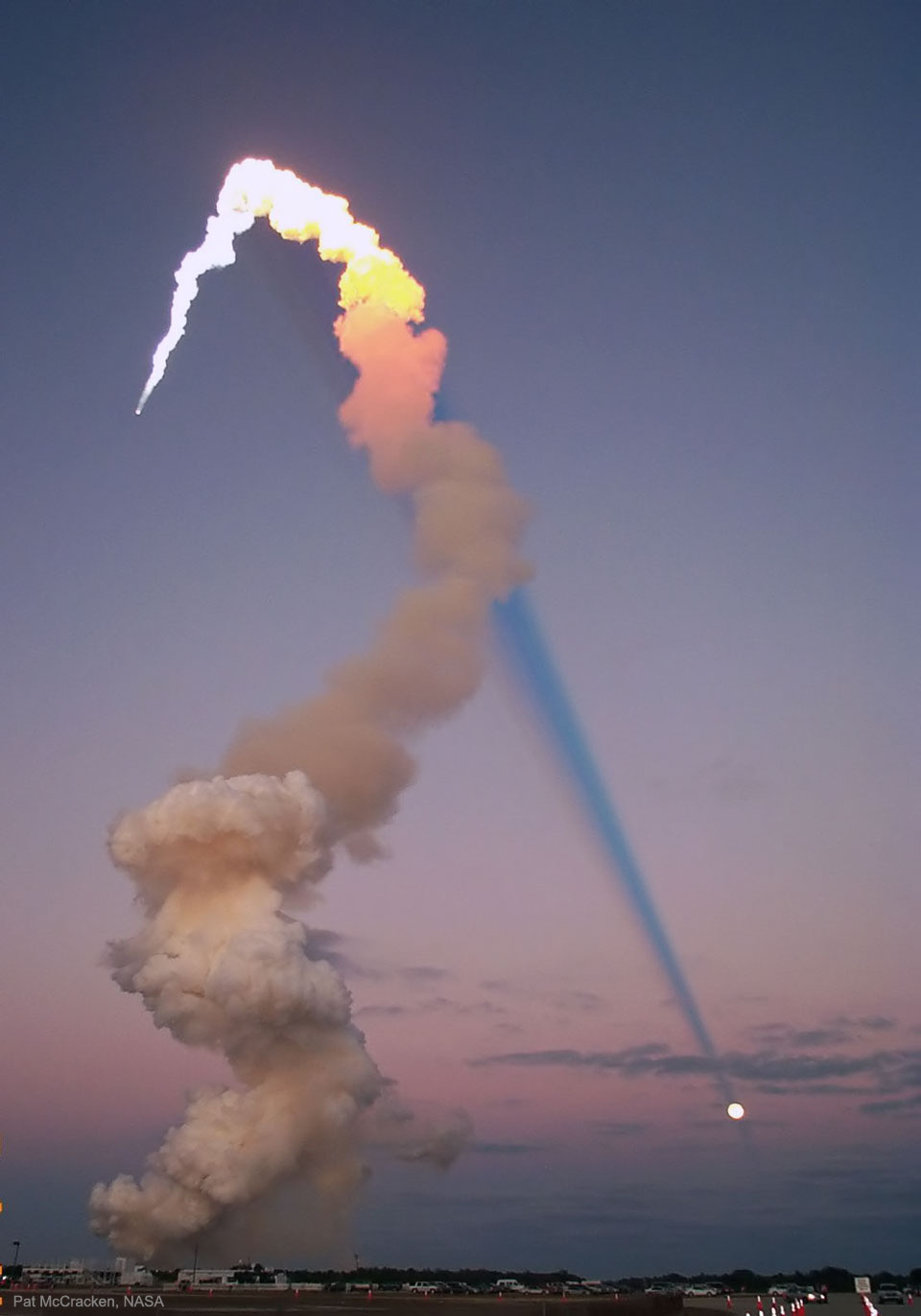
2018年6月23日 星期六
Aldrin Family Statement on Recent Lawsuit
"We are deeply disappointed and saddened by the unjustified lawsuit that has been brought against us individually and against the Foundation that we have built together as a family to carry on Dad's legacy for generations to come. When we established the current structure several years ago, it was done so at Buzz's request and with his full support. If nothing else, our family is resilient and our ability to work together to solve problems and accomplish great things is strong. We love and respect our father very much and remain hopeful that we can rise above this situation and recover the strong relationship that built this foundation in the first place.
We will not be commenting further on the lawsuit and ask your understanding and respect for our family privacy at this extremely difficult time."
--- Andy Aldrin and Jan Aldrin"
from NASA Watch https://ift.tt/2MhLwYU
via IFTTT
Curiosity s Dusty Self

2018年6月22日 星期五
ISS Daily Summary Report – 6/21/2018
June 22, 2018 at 12:00AM
from NASA https://ift.tt/2K7STBs
via IFTTT
Media Invited to Preview Expedition to Ocean Twilight Zone
June 22, 2018
from NASA https://ift.tt/2MPLdFD
via IFTTT
Chaotic Clouds of Jupiter

NASA Television to Air Launch of Next Space Station Resupply Mission
June 22, 2018
from NASA https://ift.tt/2tkVfXg
via IFTTT
Galaxy in a Crystal Ball
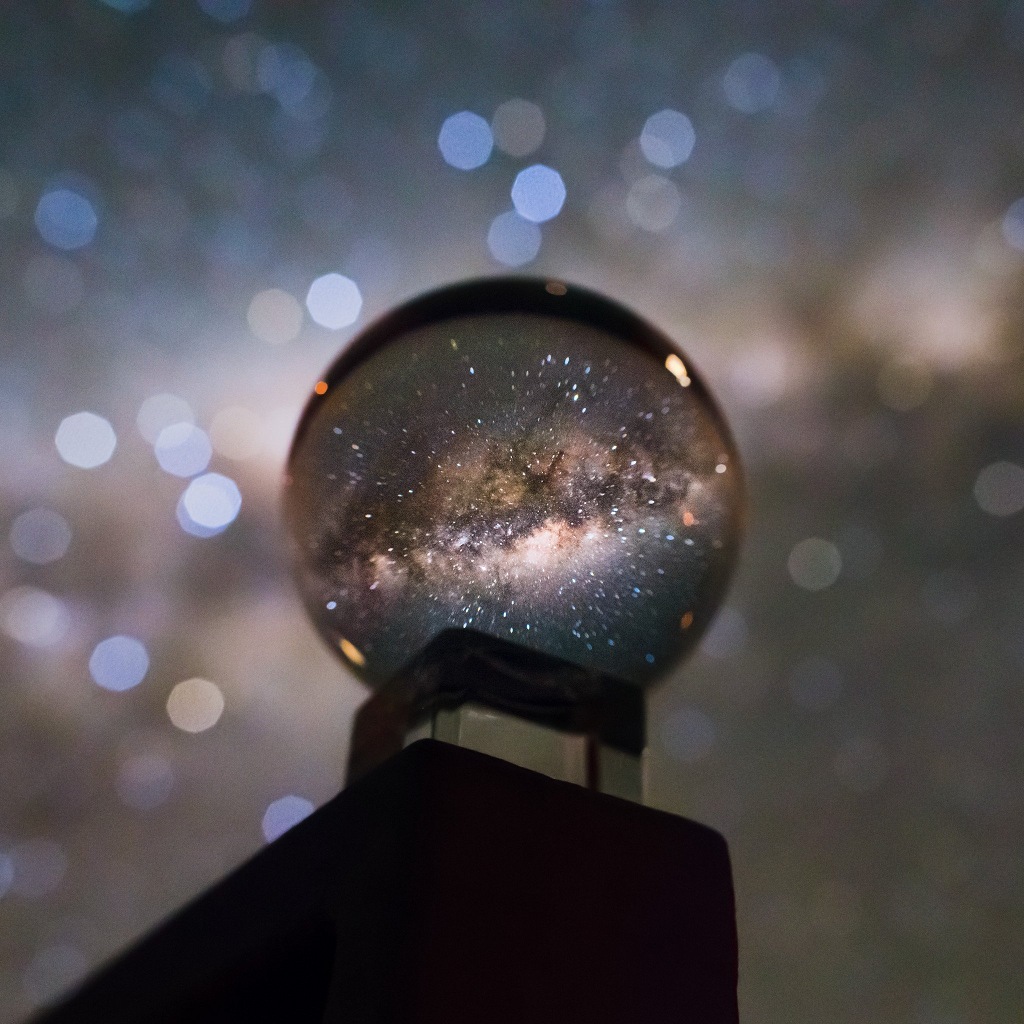
2018年6月21日 星期四
Is The Voice Behind @TheRealBuzz Really Buzz Aldrin?
Keith's note: The following statement was received by NASA Watch from the Buzz Aldrin Space Foundation (https://buzzaldrinfoundation.org) in response to an inquiry we made about recent postings on @TheRealBuzz:
"Keith,
Thanks for your interest and concern. In response to your questions from NASA Watch, I have been reassured by the Buzz Aldrin Space Foundation that, contrary to recent Twitter postings on @TheRealBuzz, Christina Korp has not been terminated. Such a termination would require a majority vote of the board, which has not occurred. Christina is continuing in her ongoing roles with the Buzz Aldrin Space Foundation and Share Space Foundation.
We are not sure who is responsible for the Tweet regarding Christina, but we are confident Buzz did not write this. It appears, as many have speculated online, that management of the Twitter account @TheRealBuzz has indeed been reassigned without proper verification.
I will add that the Aldrin family and Foundation colleagues have expressed concern for Buzz's potential vulnerability to manipulation by other parties seeking to gain access to and control of Foundation and personal resources. In addition to the important mission of the Foundation, they remain committed to protecting his personal reputation and professional legacy, as well as his ability to remain self-sustaining financially.
Thanks for your interest.
Jeff Carr
Spokesman for Buzz Aldrin Space Foundation"
from NASA Watch https://ift.tt/2K80vnq
via IFTTT
Launching to Observe Our Sun

Northern Lights and Noctilucent Clouds
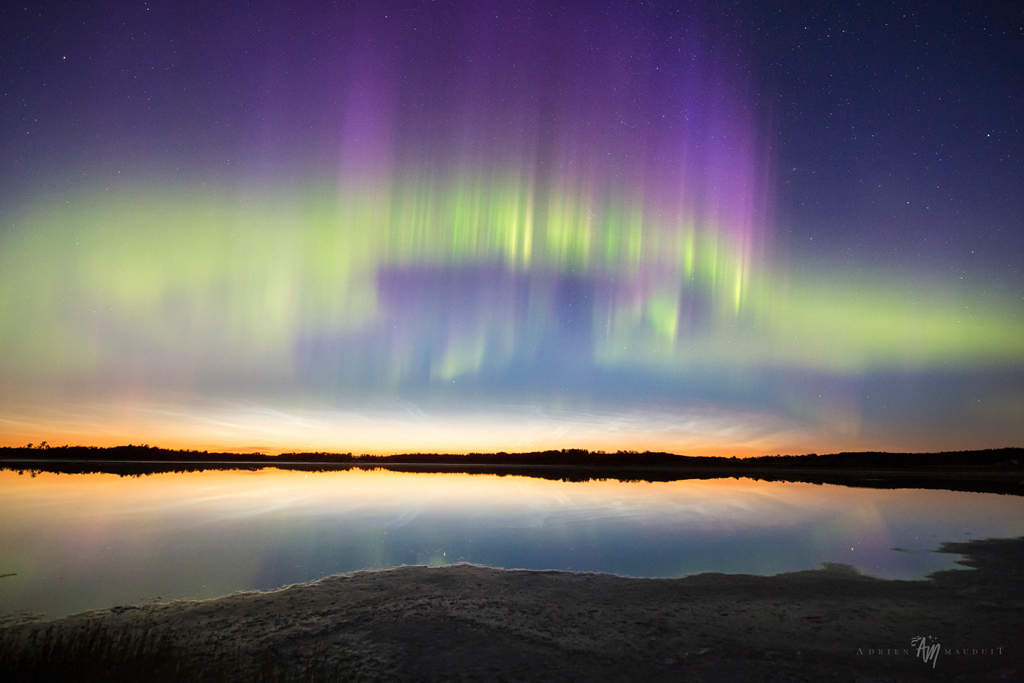
2018年6月20日 星期三
Once in a Blue Dune

ISS Daily Summary Report – 6/19/2018
June 20, 2018 at 12:00AM
from NASA https://ift.tt/2llNfRB
via IFTTT
Pillars of the Eagle Nebula in Infrared
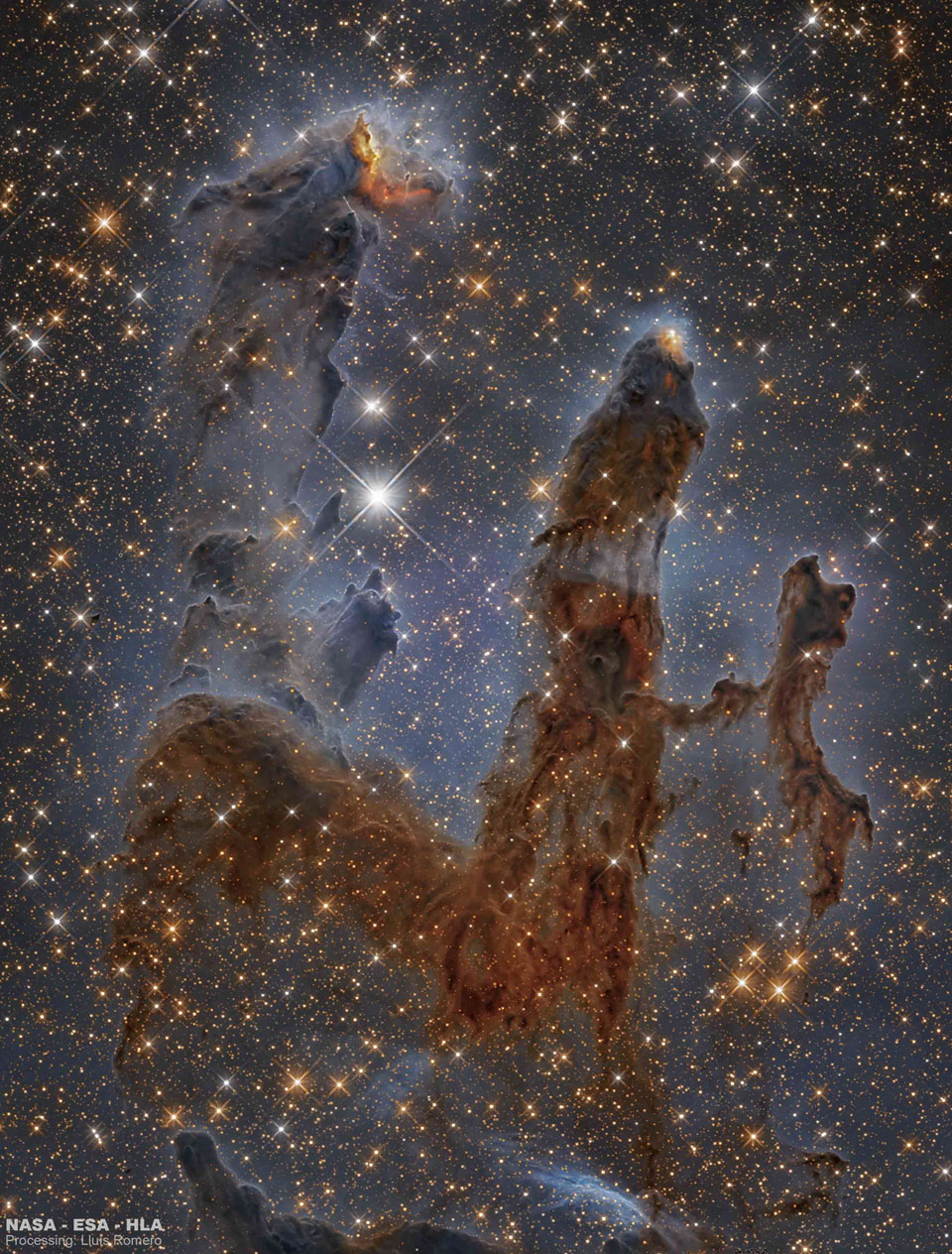
2018年6月19日 星期二
Looking For User Advisory Committee: The Next Generation
Keith's note: This is the question I asked at the User Advisory Council meeting today. "I have a question about the actual composition of the User's Advisory Group: With one exception only one person seems to be under 50 years of age and the panel is rather heavily loaded with Big Aerospace management. There is no apparent representation of the next generation of people who will actually live and work in space - you know, young people. Is this lack of representation by the next generation deliberate or an oversight?"
from NASA Watch https://ift.tt/2lnTHrn
via IFTTT
Rover Under the Milky Way - Atacama Rover Astrobiology Drilling Studies

ISS Daily Summary Report – 6/18/2018
June 19, 2018 at 12:00AM
from NASA https://ift.tt/2JY94kQ
via IFTTT
Ancients of Sea and Sky
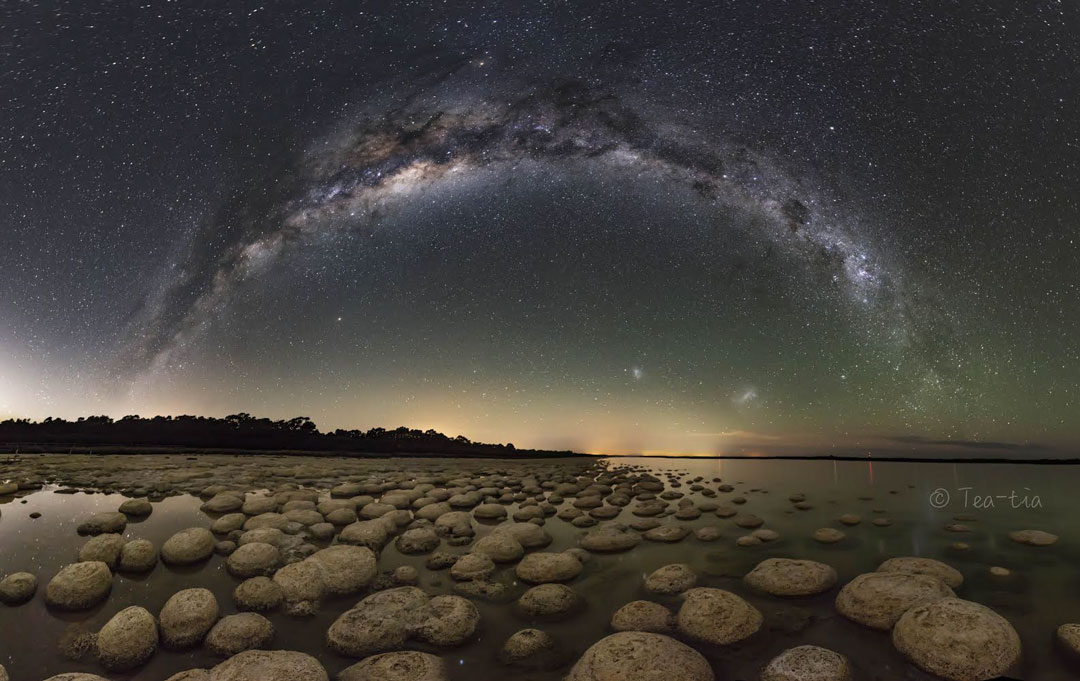
2018年6月18日 星期一
Another Day at the Office

Rotatin' Ryugu!
One of the coolest things about a mission to a new world is that as the spacecraft approaches, you get to see the world gradually take shape before your eyes. Japan's Hayabusa2 spacecraft is now less than 200 kilometers from Ryugu, the small, near-Earth asteroid from which it will collect a sample for return to Earth in 2020. Until now, we've only known Ryugu as a point of light, but behold!—It's starting to become a lumpy asteroid in Hayabusa2's navigation cameras:
JAXA, University of Tokyo, Kochi University, Rikkyo University, Nagoya University, Chiba Institute of Technology, Meiji University, University of Aizu and AIST
A day on Ryugu
This animation was created from 52 images captured by Hayabusa2's ONC-T (Optical Navigation Camera - Telescopic) on June 14 and June 15. The asteroid makes a complete rotation every 7 hours, 38 minutes.
Just for reference, here's what shape models of Ryugu were predicting back in 2017:
We know you love reading about space exploration, but did you know you can make it happen?
Consider a gift to our Space Policy and Advocacy program to fuel more missions, more science, and more exploration.
from Planetary Society Blog https://ift.tt/2ymvx9V
via IFTTT
NASA, NSF Plunge Into Ocean ‘Twilight Zone’ to Explore Ecosystem Carbon Flow
June 18, 2018
from NASA https://ift.tt/2JX0bvb
via IFTTT
Brooklyn Students to Link Up with NASA Astronauts on Space Station
June 18, 2018
from NASA https://ift.tt/2LZyAqA
via IFTTT
President To Sign Directive Dealing With Space Traffic Management
Today the President will sign Space Policy Directive 3 (SPD-3) at the National Space Council meeting being held at the White House. SPD-3 deals principally with space traffic management. This morning in a media call National Space Council Executive Director Scott Pace said the U.S. needs to ave unfettered access and the ability to operate space - but space is becoming congested. The new policy (SPD-3) addresses these challenges.
SPD-3 establishes principles, goals, and guidance on how to achieve these goals. It also establishes responsibility within the U.S, government for taking on the task of implementing these goals: the Department of Defense will take the lead on developing an authoritative catalog of space objects; the Department of Commerce will be responsible for the releasable portions of the catalog for collision avoidance purposes; the Department of Commerce and the Department of Transportation will lead the development of standards and practices, and the State Department will lead U.S. efforts to conduct these activities internationally with transparency.
Pace says that this is going to be a "bottom-up process" using best practices from industry. As such no treaty-level document is envisioned. Pace said that the U.S. wants to avoid creating an international treaty since that would be complicated and take time to do Instead, Pace says that they will be working to make this happen faster by having recommendations incorporated into various countries laws and regulations.
Pace concluded by saying that a next step for the space council will be space debris and proximity operations as it relates to on-orbit servicing.
from NASA Watch https://ift.tt/2t4Je8b
via IFTTT
An Active Prominence on the Sun

2018年6月17日 星期日
National Space Council User Advisory Group Is Purging Innovation From Its Ranks
Keith's note: Newt Gingrich and Pete Worden have been removed from the UAG for reasons that sources say have to do with issues that arouse while vetting Gingrich and Worden to serve on the UAG. That's the official excuse. Vetting is good thing to do especially for advisory groups. Oddly this "User" Advisory Group is more like a "Customer" Advisory Group with a majority of its members representing companies who already receive (and seek) huge amounts of money from NASA, DOD, DOC, etc. and have a vested interest in maintaining one or another aspect of the status quo. Actual potential users of space from the perspective of the U.S. government are virtually absent from this panel. This panel is all about serving the interests of Big Aerospace.
Many of the UAG members come from the top of Big Aerospace and serve as CEOs/Chairs/Presidents: Marillyn Hewson (Lockheed Martin), Dennis Muilenburg (Boeing), Wes Bush (Northrop Grumman), Fatih Ozmen (Sierra Nevada), David Thompson (Orbital ATK), Gwynne Shotwell (SpaceX), Bob Smith (Blue Origin), and Tory Bruno (ULA). Add in members representing the two major commercial space trade groups for Big Aerospace such as Eric Stallmer (Commercial Spaceflight Federation) and Mary Lynne Dittmar (Coalition for Deep Space Exploration) and you have the majority of Big Aerospace Advising the National Space Council on how America should do things in space. Not exactly a recipe for change and innovation.
To be certain SpaceX and Blue Origin and other new companies seek to upset the status quo - but right now they are, for the most part, still regular government customers just like the older companies. By a strange coincidence, pushing for change and innovation in space are two traits that Gingrich and Worden are best known for. It would seem that these things are of lesser important to the National Space Council these days. Not a good sign.
from NASA Watch https://ift.tt/2JUnEdb
via IFTTT